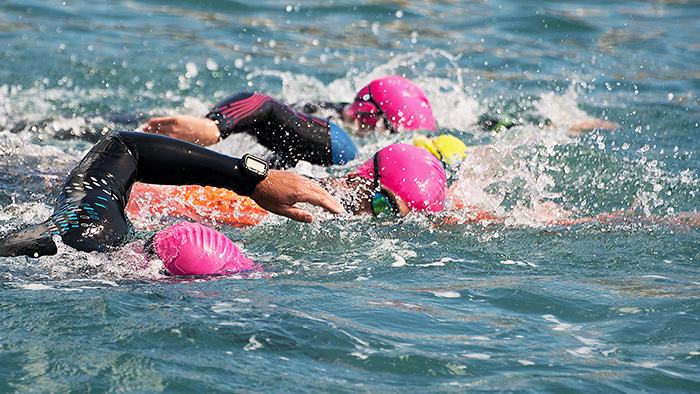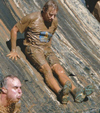Imagine for a moment that you’re at an in-water swim start at your local triathlon. Your goggles are set, you’re warmed up, seeded correctly (you think), and you’re nervous as all get out. Then, almost out of nowhere, the air horn blasts from the race director and it’s go time!
Starts are always chaotic and exciting, with some racers gunning it from the start and others taking a more measured approach. Which one are you? Which one do you want to be?
We’re talking about one of the absolute key issues in this sport: Pace. I guarantee every single person reading this has learned about pace the hard way, more than once. (Hopefully just not recently!) But even the hardest-learned lessons can go out the window when you’re nervous or excited, or when the wind’s in your hair and you’ve got a closed road to yourself. Fortunately, it’s possible to work with these nerves, rather than against them.
Like most things triathlon-related, the solution comes from three things. Preparation, practice in training, and trial and error. If you know you tend to get overexcited at the start, you should train for a slightly higher race pace at the gun. That means making several pretend race starts, say once a week, at a variety of efforts. That way you can figure out how long you can push yourself before slowing back to race pace and looking for another pair of feet upon which to draft. (You do draft, right?)
Another way to get your body used to a surge is to recreate it, repeatedly, at different points in your workout. This one’s called “Pig in a Python.”
Total duration: is 125 yards, 5 times.
Round 1: Swim the first 25y is fast, the remaining 100y at your pace.
Round 2: Swim the first 25y at your pace, then swim second 25y fast, and take the remaining 75y at your pace. Starting to get it? We’ll do one more.
Round 3: Swim the first 50y at pace, then take the next 25y fast, and the final 50y at your pace.
In other words, the 25y surge (or the “Pig”) is moving progressively later into the effort with each repetition. (Pick a fairly short rest interval in between 125s, like 5 or 10 seconds.)
Try that as your main set one day a week for a few weeks. Once it’s old hat, try making one small change.
Again we’re thinking 5 X 125y.
Again, our first round is 25y fast, 100y pace.
But here’s the change: rather than moving the 25y surge later in the interval, you’re going to extend it. So the second round will be 50y fast and 75y at pace. The third round will be 75y fast and 50y at pace etc. until round five, when all 125y is fast.
Come summer, when the gun goes off, you’ll have trained your body to push a little at the beginning of the swim, and anywhere in between. That means that no matter how nervous or excited you get, you won’t get to 300 yard mark wondering why there’s this truck on your back and you can’t catch your breath!
Good luck and happy racing!


